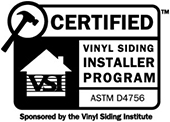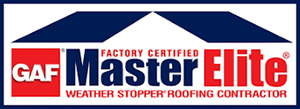When it comes to the aesthetics and protection of your home, certain architectural components often go unnoticed. Yet, they play a critical role in ensuring its longevity and appeal. Meet the unsung components of your home’s exterior: the soffit and fascia. Read on to learn more about soffit and fascia, their significance and distinctive features, and why they are vital for safeguarding your home against the elements.
To learn more or request a quote from our roofing company for your roofing needs in the St. Charles area, contact us online or by phone today.
What Are Soffit and Fascia?
First up, let us discuss what soffit and fascia mean and why you should care about them. Derived from French and Latin, the word soffit means “formed as a ceiling” or “to fix underneath” respectively. It is the exposed undersurface of the eaves, bridging the gap between the exterior wall and the roofline. Soffit typically spans the horizontal space between the roof’s edge and the siding, elegantly finishing the roofline’s appearance.
Fascia, on the other hand, is the vertical wooden (typically) band that runs along the lower edge of the roofline, connecting the roof to the outer walls of the building. It provides support for the lower edge of the roof, and the gutter system, and makes your home or building look finished.
More importantly, both soffit and fascia protect your building from pests and help in your building’s ventilation.
Soffit and Fascia Uses
These inconspicuous elements play crucial roles in protecting your home. Key uses include:
- Protection Against the Elements and Nature: Soffits protect your home from water damage, wind-driven rain, and pests that may try to find their way into your attic.
- Ventilation: Soffits are essential for proper attic ventilation and temperature regulation. They allow air to flow into the attic and prevent moisture buildup.
- Structural Support: Fascias provide crucial structural support to the lower edge of the roof. They help keep the roofline stable and protect it from weather damage and wear over time.
- Aesthetics: Soffits and fascias add a polished and finished look to your home’s exterior. With various materials, colors, and styles available, they can enhance your home’s curb appeal and make it stand out in the neighborhood.
Common Materials Used for Soffit and Fascia
Soffits and fascias are available in a range of materials, each with its unique advantages, cost, and aesthetics:
- Vinyl: Vinyl soffits and fascias are popular due to their durability, low maintenance, and resistance to moisture, pests, and rot.
- PVC, UPVC: These are affordable, water-resistant, and highly durable against warping or rotting.
- Aluminum: Aluminum soffits and fascias are lightweight, rust-resistant, and offer excellent durability, making them a preferred choice for many homeowners.
- Wood: Wooden soffits and fascias offer a traditional and natural look but require more maintenance and may be susceptible to rot and insect damage.
- Composite: Composite materials provide a combination of durability and aesthetic appeal, often mimicking the look of wood without its maintenance demands.
Issues with Soffit and Fascia Boards
Both soffit and fascia are key in protecting roofs and shingles from weather damage. However, issues with them can lead to flashing issues, which in turn, can lead to further damage. If you experience any problems with your soffit or fascia, it is important to contact an expert for soffit and fascia repair or replacement.
Some of the common problems include:
- Rotting wood causing decay
- Mold, leaks, or water damage
- Peeling paint, discoloration, cracks, and gaps
- Pest invasion
Learn More About Our Repair & Replacement Services in St. Charles
If you think your soffit or fascia needs repair or replacement, get in touch with Schneider Roofing and Remodeling today. We offer complete services including:
With an impressive array of roofing services and expert professional teams, we take care of all your roofing requirements at a competitive cost. Call us or request a free estimate today!















